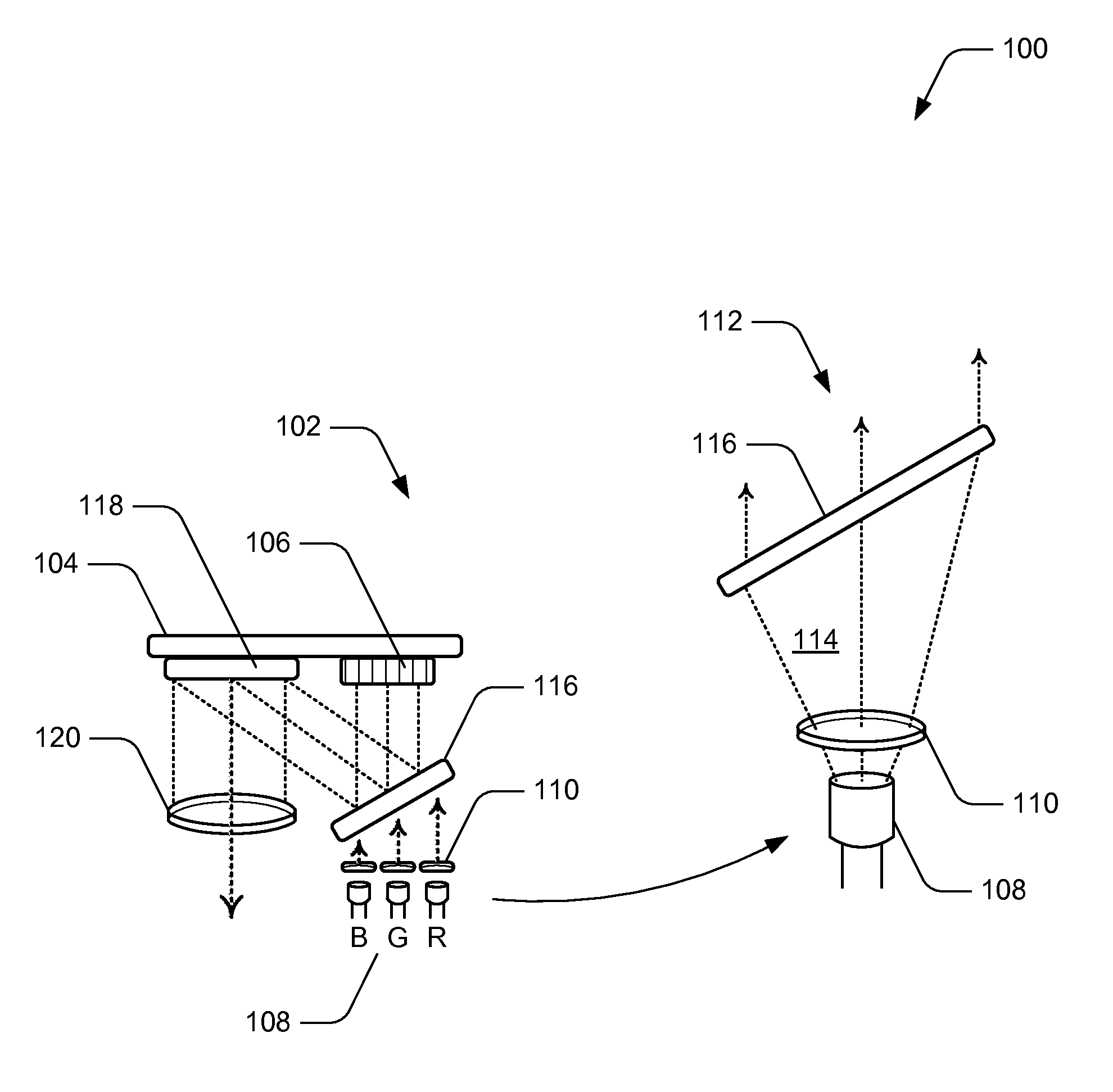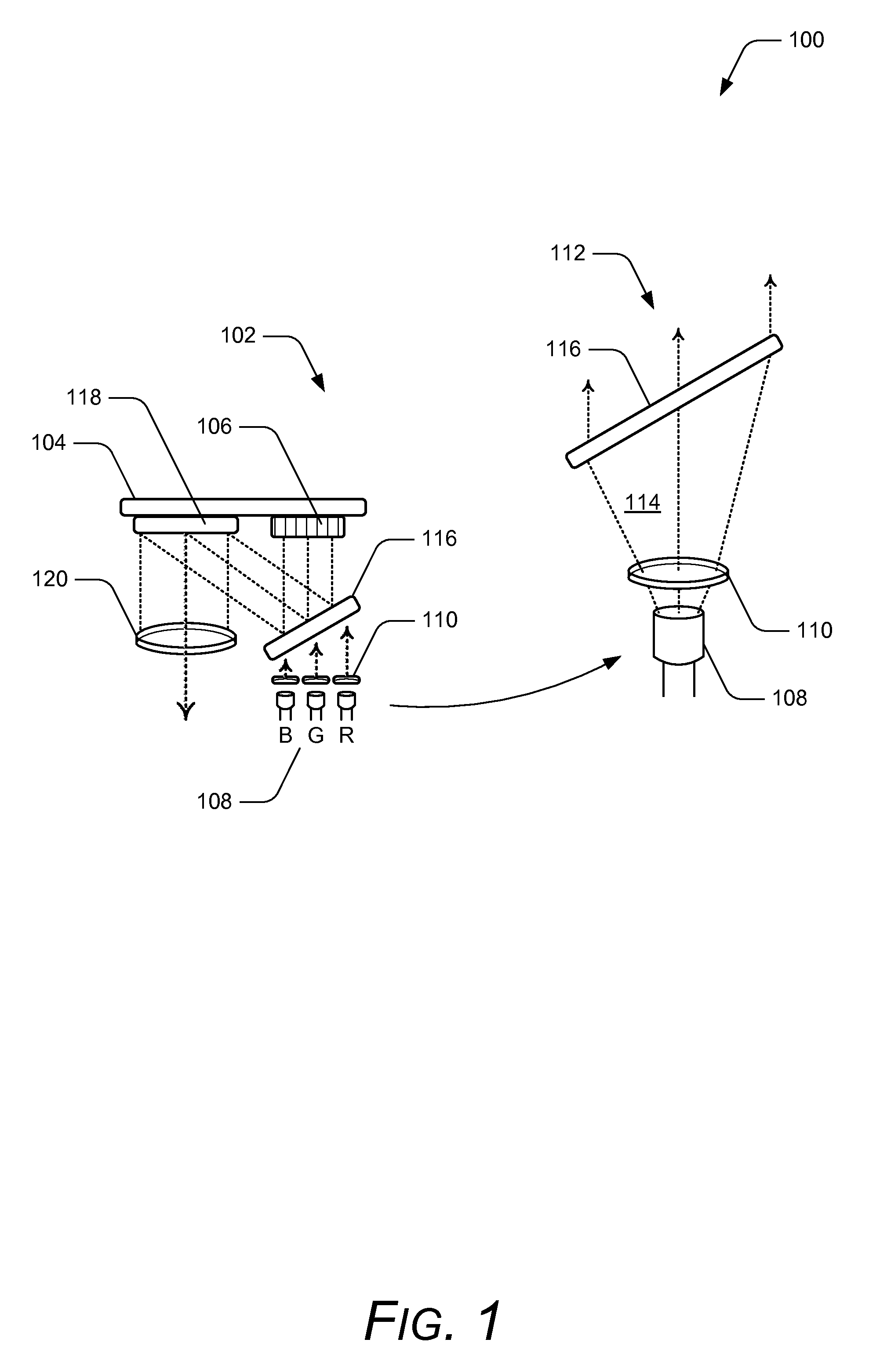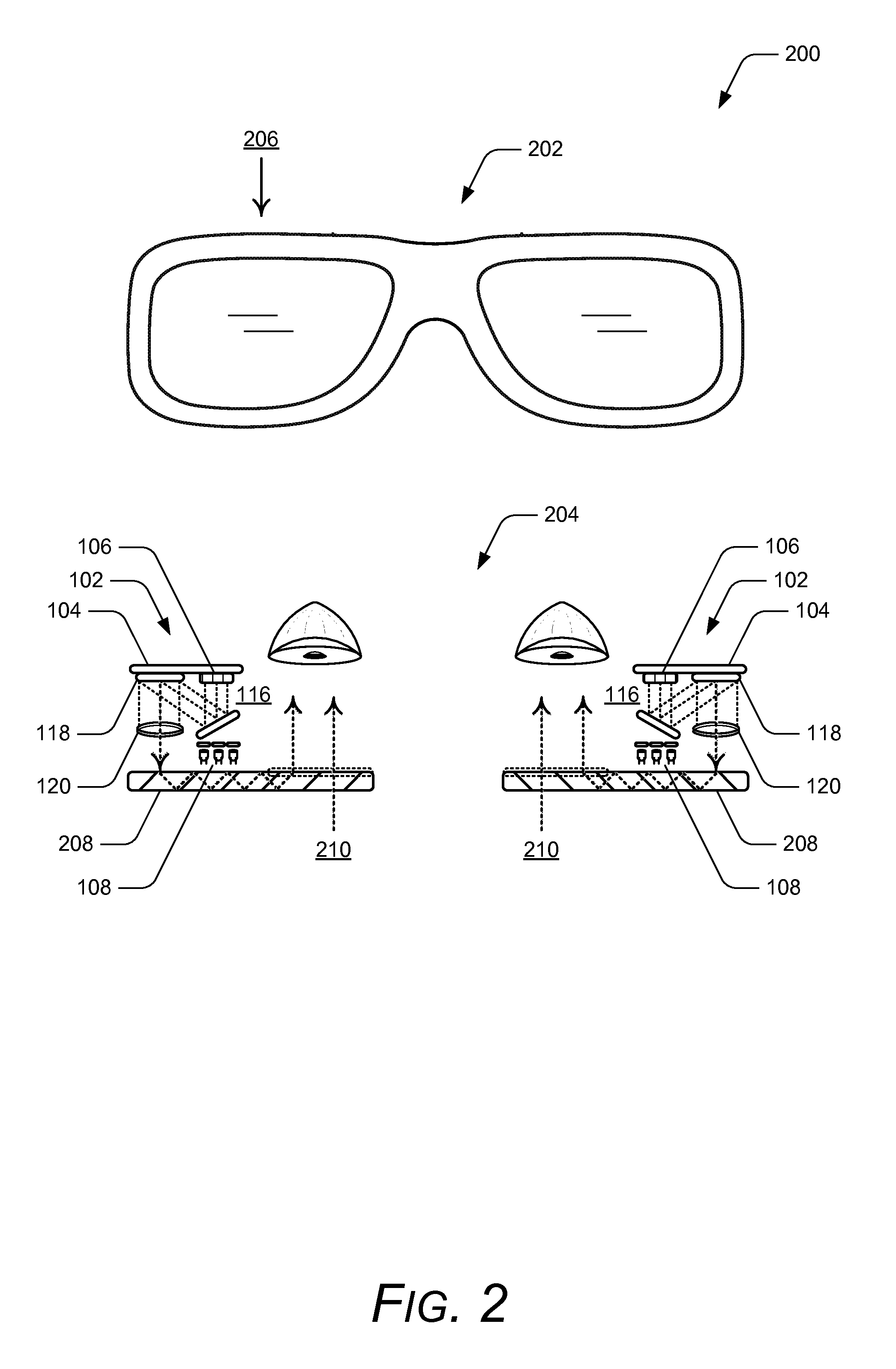Laser illumination scanning
a laser illumination and scanning technology, applied in optics, instruments, static indicating devices, etc., can solve the problems of slow refresh rate, large optical system size, and inability to project illumination of led array scanning systems for display technologies with large optical systems,
- Summary
- Abstract
- Description
- Claims
- Application Information
AI Technical Summary
Benefits of technology
Problems solved by technology
Method used
Image
Examples
Embodiment Construction
[0013]Embodiments of laser illumination scanning are described. An imaging system of a wearable display device (e.g., glasses or a head-mounted display) can include left and right imaging units that generate a virtual image for display and viewing. In a scanning system, lasers can be implemented to illuminate a linear array of spatial light modulators that are scanned to generate a two-dimensional image for display or projection. For example, red, green, and blue (RGB) lasers emit RGB light that illuminates the linear array of spatial light modulators, which is then reflected through optics onto a scanning mirror and directed into a waveguide or otherwise projected. The lasers and linear array of spatial light modulators provides a reduction in size over a conventional linear array, as well as a corresponding reduction in the size of the optics that can be implemented for a wearable display device.
[0014]While features and concepts of laser illumination scanning can be implemented in...
PUM
 Login to View More
Login to View More Abstract
Description
Claims
Application Information
 Login to View More
Login to View More - R&D
- Intellectual Property
- Life Sciences
- Materials
- Tech Scout
- Unparalleled Data Quality
- Higher Quality Content
- 60% Fewer Hallucinations
Browse by: Latest US Patents, China's latest patents, Technical Efficacy Thesaurus, Application Domain, Technology Topic, Popular Technical Reports.
© 2025 PatSnap. All rights reserved.Legal|Privacy policy|Modern Slavery Act Transparency Statement|Sitemap|About US| Contact US: help@patsnap.com



